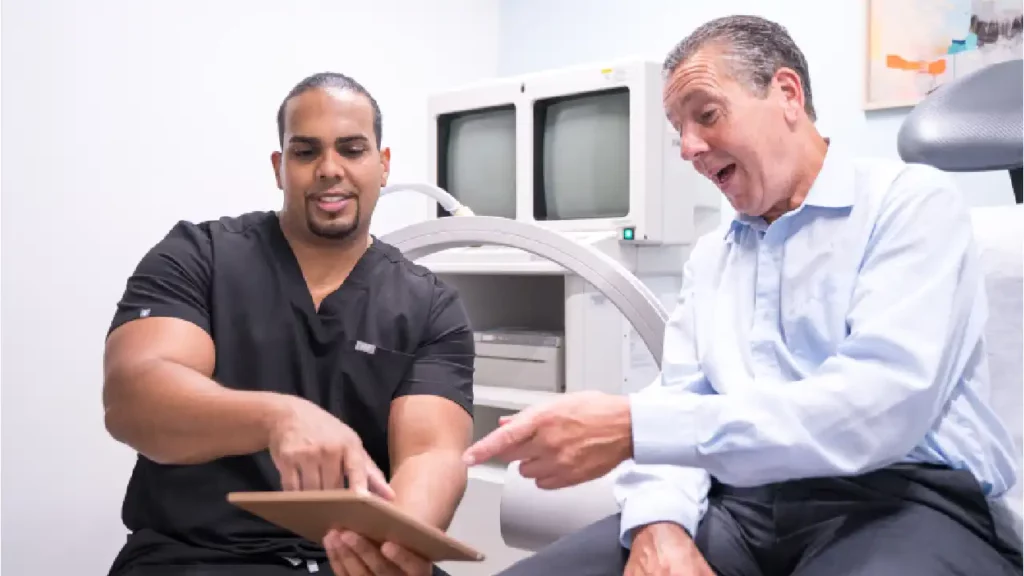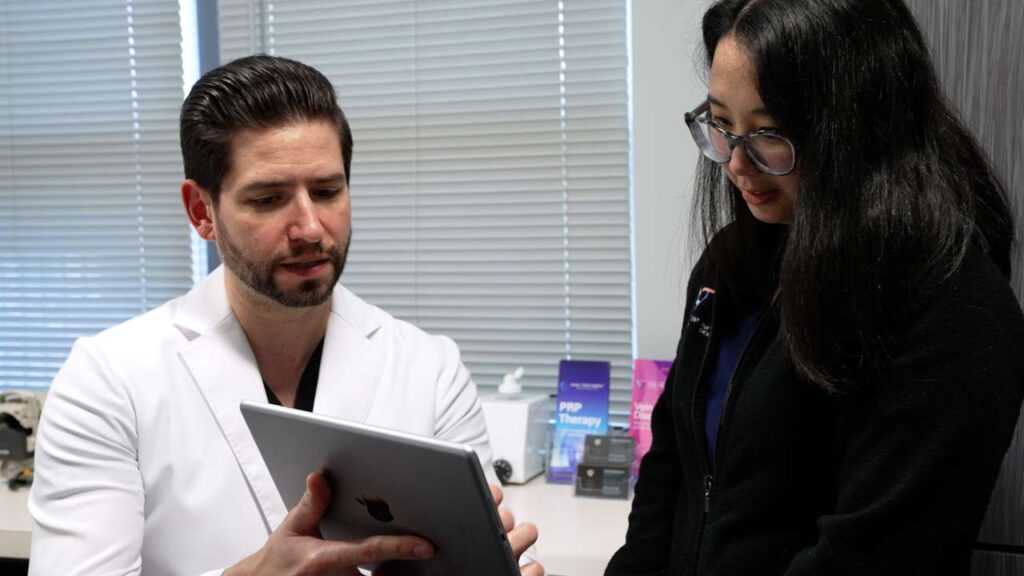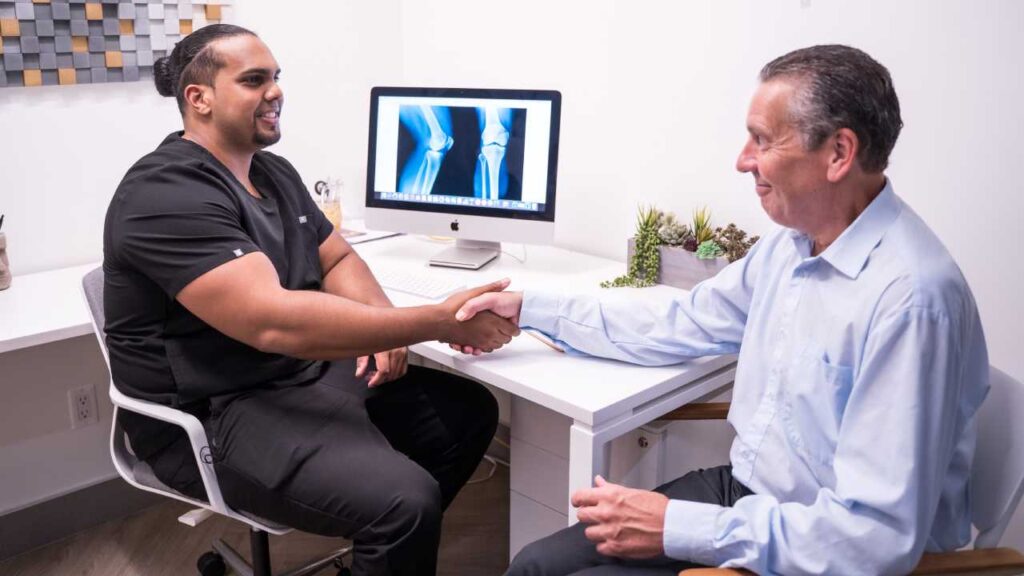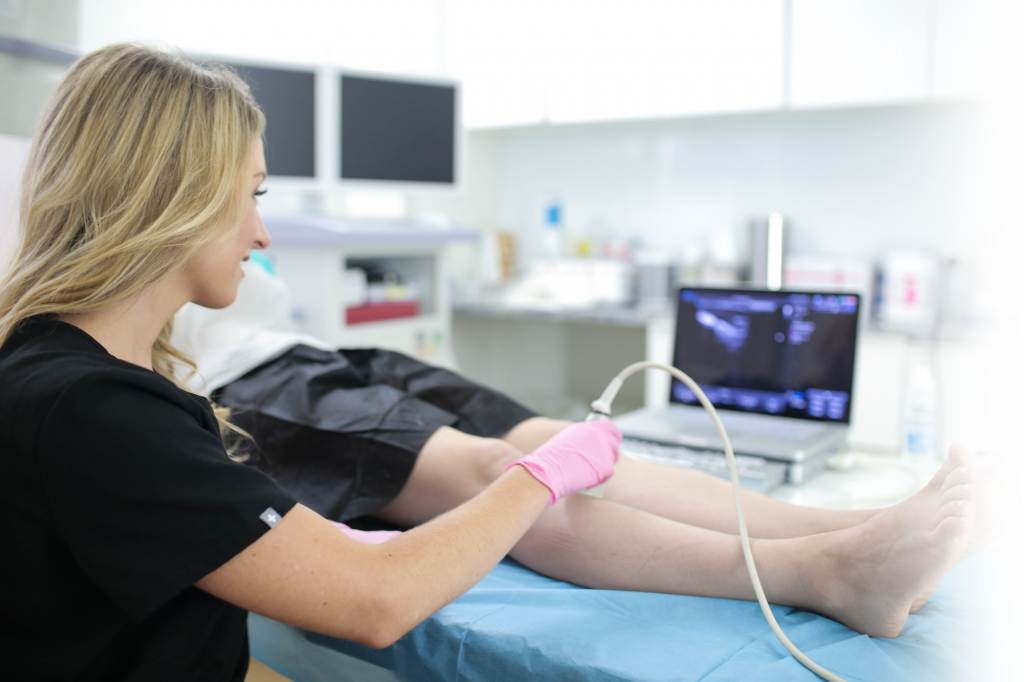Consult the Best Vein Specialist in NJ Today!
The VIP Vein Clinic is widely considered the best group of state-of-the-art vein clinics in New Jersey, with offices in Clifton, Paramus, and Woodland Park. Our vein clinics’ stellar reputation is primarily because of our exceptional vein doctors and medical directors. We individually select the country’s best vein experts from reputable medical institutions, residency programs, and fellowships. Furthermore, our vein doctors undergo advanced training and board certification from the American Board of Venous and Lymphatic Medicine to establish themselves as the country’s leading vein experts.
Our vein doctors also follow a unique personalized treatment plan that ensures all vein treatments are modified according to the patient’s unique needs. Most vein clinics only treat cosmetic problems, such as the visible spider veins and superficial varicose veins. But our vein doctors perform a thorough investigation to identify and treat the root cause of spider veins and varicose veins, thereby minimizing the risk of vein disease recurrence. Furthermore, our vein doctors avoid vascular surgery in favor of minimally invasive vein care — allowing you to resume your daily activities immediately.
Below, introduce you to the best vein specialists in NJ, including the location of their vein clinics and educational backgrounds, followed by a comprehensive overview of their personalized treatment plans.
Dr. Todd Kobrinski
- Leading vein specialist in Paramus and Woodland Park — 140 NJ-17 #103, Paramus, and 1167 McBride Ave Suite 2, Woodland Park
- Bachelor’s and Master of Science degrees from The George Washington University
- Medical degree from Nova Southeastern University in Florida
- Post-graduate training through the Icahn School of Medicine at Mount Sinai St. Luke’s Roosevelt Hospital Center in New York City
- Three years of Residency in Internal Medicine
- Five years of Fellowships in Cardiovascular Disease and Clinical Cardiac Electrophysiology
- Published in the American Journal of Cardiology and the American College of Cardiology Scientific Sessions
Dr. Sareh Rajaee
- Medical director of VIP Vein Clinic at 1117 US-46 Suite 205, Clifton, NJ
- Board-certified by the American Board of Venous and Lymphatic Medicine
- Double majors in Biomedical Engineering and German at the University of Rhode Island
- Medical doctorate from the Alpert Medical School at Brown University
- Master’s in Public Health at the Harvard School of Public Health
- Residency in Vascular Surgery from the Yale New Haven Hospital
- Fellowship in endovascular procedures for peripheral arterial disease and vein disease
Step 1: Initial Consultation
Your vein treatment journey starts with an initial consultation with our vein doctors in New Jersey. The vein doctor will first perform a physical examination, which involves looking at your spider veins and varicose veins. They assess the symptoms, location, and size of the varicose veins and spider veins to determine if you have vein disease. The vein doctor will also ask about your symptoms if you experience leg heaviness, frequent leg cramps, restless leg syndrome, leg pain, or leg swelling, especially at the end of the day. These are common symptoms of chronic venous insufficiency.
Step 2: Vascular Imaging
After the initial consultation, the vein doctor schedules an ultrasound scan, known as duplex ultrasound. This test helps them confirm if you truly have chronic venous insufficiency. It’s important to diagnose vein disease before curating a personalized vein treatment plan — treating spider veins without addressing the root cause would inevitably cause a relapse. During the ultrasound scan, a handheld device is moved over your legs to produce a visual image of the blood flow in your leg veins. The vein doctor interprets the ultrasound image to determine if you have chronic venous insufficiency.
Step 3: Primary Treatment
If you have chronic venous insufficiency, the vein doctor provides minimally invasive varicose vein treatments for the underlying problems. Radiofrequency ablation, endovenous laser ablation, and venaseal are the most effective minimally invasive procedures. During the ablation procedures, the vein doctor channels thermal energy or laser energy into the diseased saphenous vein via a catheter — this collapses the diseased vein. During venaseal, the vein doctor injects a medical glue into the diseased vein, sealing its walls shut. The accumulated blood reroutes into healthier leg veins, restoring optimal blood circulation to the heart.
Step 4: Cosmetic Treatment
The primary vein treatment is followed by cosmetic treatments for the superficial varicose veins and spider veins. The vein doctor performs the cosmetic treatment after the primary treatment to minimize the risk of recurrence. Ambulatory phlebectomy is the best minimally invasive procedure for superficial varicose veins. During this procedure, the vein doctor makes small incisions on the skin’s surface to extract the superficial varicose veins. Sclerotherapy is the best minimally invasive spider vein treatment. During this procedure, the vein physician injects sclerosant medicine into spider veins to seal them shut, turning them into hardened tissues absorbed by the body.
Step 5: Recovery & Aftercare
Minimally invasive spider vein and varicose vein treatments are in-office and outpatient procedures — they conclude within 30 to 60 minutes with no downtime. After the treatment, the vein doctor will apply pressure on your leg veins while you stand up. You have to wear compression stockings for a few weeks to minimize the risk of vein disease recurrence. The vein doctor will also provide a comprehensive overview of your recovery guidelines — you’ll be advised to avoid strenuous workouts and heavy lifting for a few days. However, you can resume normal activities and work immediately after the vein treatment.





